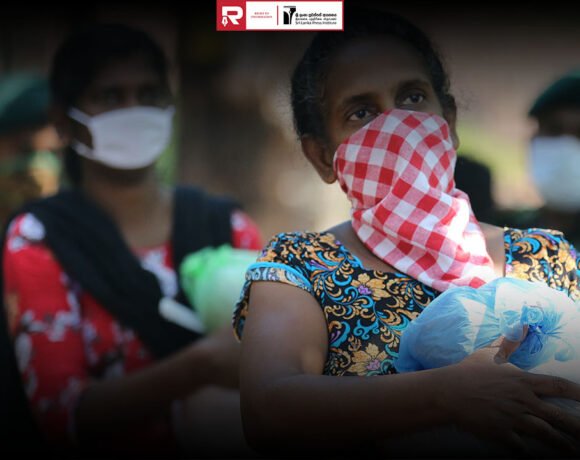
What Caused the Human-Elephant Conflict in Hambantota?
Sachini D. Perera
Massive human-elephant conflicts are currently developing in a number of areas due to the encroachment of elephants that lost their habitats due to large-scale illegal development activities carried out near dense forests. One of the highly exposed areas suffering from elephant attacks is Hambantota. For instance, due to the ‘Walawa’ left-bank development project which was launched a few years ago by the previous government, many elephants lost their habitats and started to come into villages. As a result, in the past few years alone, a number of elephants have been shot and killed using ‘hakka patas’ and electric fences. According to the Department of Wildlife Conservation, people who were attacked by elephants have died and others are disabled. The Wildlife Office pointed out that this situation is further aggravated due to the non-declaration of the Wild Elephant Management Reserve proposed by the Department of Wildlife Conservation and the rapid clearing of the forest lands belonging to it by the Mahaweli Authority for gravel mining, quarrying as well as various development activities and commercial cultivations.
In addition, the proposed Elephant Management Reserve is creating a new village by crossing ‘Elephant Pass’ (Ali Mankada) in various areas including ‘Kurudana’ and allocating lands to various people for commercial cultivations. This was stated by the Chairman of the Environmental Conservation Trust. Further, the Department of Wildlife Conservation proposed to declare the Hambantota Wild Elephant Management Reserves in Udawalawe, Lunugamwehera and Bundala as National Parks with the aim of identifying the migration patterns of elephants and netting forest areas to control the human-elephant conflict in Hambantota. According to the Wildlife Department, this will protect the habitats of about 450 wild elephants living in the Hambantota area.
About 600 acres of the ‘Andarawewa Usgala’ Reserve, 100 acres of the ‘Wewegama’ Reserve, 400 acres of the ‘Kuda Idi Wewa’ Reserve and 25 acres of the ‘Suruvirugama Muttagal Ara’ Reserve which are under the control of the Mahaweli Authority have been illegally cleared for large-scale cultivations a few years ago and even unauthorized electric fences have been erected. It is clear that the elephant-human conflicts in the area have been exacerbated by the loss of wild elephant habitats and the encroachment of wild elephants. This fact was revealed by the Sooriyawewa Divisional Secretariat. The Secretariat had been informing the relevant and responsible institutions some time ago that large-scale unauthorized cultivators should be removed from the protected areas as a solution to this problem but no action has been taken so far. Due to the blockage of elephant habitats by way of construction of electric fences, the damage caused by elephants to farming yards in Maha Andarawewa, Walsapugala, Karuwala, Tissapura and Ranamayurapura has increased.
According to the amended National Environmental Act No. 47 of 1980, Gazette Notification No. 772/22 dated 24th June 1993, prior to clearing over 2.5 acres of forestland for development projects, written environmental approval must be obtained subject to the Environmental Impact Assessment (EIA) process.
A large-scale solar energy village has been built in the Walsapugala, Divulpelessa lake area, which has been cleared for various development activities. Information obtained by the Hambantota Wildlife Office reveals that this lake and the surrounding area were inhabited earlier by large herds of wild elephants. In addition, the Konkatiara forest spread over Wewegama, Weliara, Bediwewa, Bogaha Idi Wewa and Kuda Idi Wewa areas is about 700 hectares. Elephants are abundant in this dense forest.
Mattala Airport, Sri Lanka’s second international airport alone, has acquired about 2,000 hectares of the vast forest system that is a major habitat for elephants in the Mattala area and has so far developed about 800 hectares. Also, 1115 hectares have been acquired for the Hambantota International Port and an area of 700 hectares has been developed so far. It is revealed from the information obtained from the Hambantota District Secretariat that subsequently, a large amount of forest has been cleared for the construction of the Hambantota International Conference Hall, the Mirijjawila Investment Zone, the Hambantota Administrative Complex and the Hambantota Cricket Stadium, to upgrade the road network and infrastructure. As a result, large-scale human-elephant conflicts have been created with the entry of homeless elephants in small villages developed in the Pahala Andaragaswewa, Dimutugama, Elalla, Pahala Mattala, Udamattala, Punchiappujadura, Bandagiriya and Lunugamvehera project areas. The damage to farms and property is not insignificant either. This situation has even caused some farmers to withdraw from cultivation.
About 15,000 hectares of land has been allocated for various development projects in this manner over the last 15 years. These areas were formerly densely forested areas and inhabited by wild animals, especially elephants. However, most of these areas have already been cleared and used for various projects, leaving only a small amount of space for wildlife. Other protected areas in the Hambantota district are also at high risk due to large scale cultivation by unauthorized cultivators.
As such regional development projects will result in the loss of habitat for wild elephants, the human-elephant conflict is likely to escalate further into the upcoming years ahead. Therefore, this article emphasizes the importance of focusing on national and regional development projects in the country while ensuring the protection and right-to-life of all life, including wild elephants.








